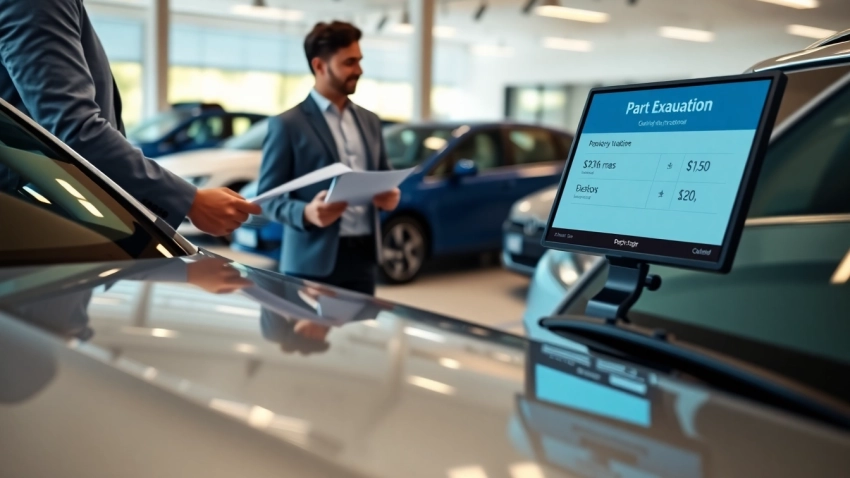
Understanding Part Exchange: A Comprehensive Guide for Car Buyers
1. What is Part Exchange and How Does It Work?
a. Definition of Part Exchange
Part exchange, or trade-in, refers to a transaction mechanism where an individual exchanges their existing asset, often a vehicle, as part of the payment for a new or different asset. This approach can significantly streamline the purchasing process while providing immediate value to the seller’s previous asset. In automotive contexts, part exchange allows car buyers to trade in their old vehicle towards the purchase of a new one. The evaluated value of the traded car is deducted from the new vehicle’s price, reducing the upfront financial commitment required from the buyer.
b. The Mechanism of Part Exchange Transactions
The part exchange process typically begins with a valuation of the current vehicle. Dealers evaluate the car based on factors such as its age, make, model, mileage, and overall condition. Once an agreed value is established, this amount is deducted from the price of the new vehicle, often resulting in a simpler transaction for both parties. Customers can also save on taxes since the value of their old car is used as a down payment. Financial experts often recommend this approach for those looking to upgrade their vehicles without the hassle of selling privately. For further guidance on this process, check out this detailed Part Exchange page.
c. Common Pitfalls in Part Exchange Deals
While part exchanges provide a convenient path to acquiring new vehicles, potential pitfalls exist. One common issue is undervaluation. Dealers may offer less than fair market value for cars to maximize their profit margins. Sellers need to research their car’s market value using reliable online resources or apps to ensure they receive a suitable offer. Additionally, some consumers rush into deals, neglecting negotiations. Buyers should always attempt to negotiate better terms or reconsider their options if the deal does not meet their expectations.
2. Benefits of Part Exchange for Car Sellers
a. Convenience of Immediate Transactions
The primary advantage of part exchange is the convenience it offers. Sellers can avoid the protracted timeline often associated with private sales. Engaging with potential buyers, handling inquiries, and arranging viewings can be time-consuming and stressful. Part exchanges consolidate these steps into a single transaction, enabling sellers to quickly transition from their old vehicle to a new one without prolonged waiting periods.
b. Financial Benefits of a Part Exchange
Financially, part exchanges present several benefits for sellers. The most immediate impact is the reduction in the overall purchase price of the new vehicle, leading to a lesser financing requirement. Moreover, this method can also be advantageous in minimizing maintenance and storage concerns associated with an old vehicle. Immediate cash returns can be redirected into a new vehicle down payment or budget.
c. Reducing Hassle: No Need for Private Sales
Part exchange removes the need to market an old vehicle, thereby relieving sellers of the typical responsibilities of private sales, such as advertisement placement, negotiation, and dealing with tire-kickers. This reduction in hassle is particularly appealing for busy individuals who may not have the time or desire to invest in the complexities of private transactions.
3. Steps to Successfully Part Exchange Your Vehicle
a. Preparing Your Car for Exchange
Preparation is critical in ensuring a successful part exchange. Sellers should consider performing basic maintenance tasks and ensuring the vehicle is clean and presentable. This includes washing and detailing the car, fixing minor issues, and gathering all service records. Providing proof of proper maintenance can boost the perceived value of the vehicle during evaluation. Conducting a self-assessment can also help sellers set realistic expectations regarding their car’s worth.
b. Finding the Right Dealer for Part Exchange
Finding a dealer who provides a fair part exchange process is essential. Research local dealerships, compare reviews, and seek recommendations. It’s also beneficial to visit multiple dealers to obtain various valuations for your vehicle. This step allows you to compare offers and choose the dealer that provides the most advantageous terms. Some dealerships may specialize in particular makes, which can lead to better valuation offers for those specific brands.
c. Negotiation Tips for a Better Deal
Negotiation is a valuable skill when part exchanging. Sellers should be prepared with evidence of their vehicle’s market value to bolster their position. When negotiating, it can be beneficial to begin with a higher expectation to allow room for compromise. Additionally, sellers should approach negotiations calmly and professionally, remaining open to the dealer’s perspectives while simultaneously advocating for favorable terms.
4. Part Exchange vs. Selling Cars Privately
a. Financial Comparisons: Which Is Better?
One of the ongoing debates surrounding vehicle sales is whether to opt for part exchange or selling privately. Often, private sales yield higher returns since they can attract buyers willing to pay more than dealers are willing to offer. However, the differences in time investments and potential for quick sales must be weighed against the financial gains. Many individuals prefer the convenience of part exchanges, even if the absolute dollar amount is less than what they would obtain via private sale.
b. Emotional Factors in Choosing Your Method
Emotions play a significant role in vehicle sales. Selling a car privately can be a more stressful experience for some individuals, as they must manage not only the technicalities of the sale but also the emotional attachment to their old vehicle. Part exchange presents a more straightforward and less emotionally taxing option, allowing sellers to move on quickly while enjoying the excitement of their new vehicle.
c. Market Considerations for Both Options
The current market conditions can also influence the decision between part exchange and private sales. Financial fluctuations, demand for used vehicles, and the popularity of specific models can change rapidly. Understanding market trends can help sellers decide which route may yield better returns at different times. Engaging with local dealerships can provide insights into the current demand for specific vehicle types, which can be beneficial for making informed decisions.
5. Frequently Asked Questions about Part Exchange
a. Common Misconceptions of Part Exchange
Many misconceptions surround part exchange processes. One prevalent myth is that sellers will receive inadequate valuations for their vehicles. While this can occur, diligent research, vehicle preparation, and finding the right dealer can ensure a fair offering. Additionally, some individuals believe they cannot negotiate a part exchange offer; however, negotiation is possible and encouraged.
b. How to Handle Disputes in Part Exchange
Occasionally, disputes may arise during part exchange transactions, resulting from discrepancies in valuations or misunderstandings regarding the vehicle’s condition. Open communication with the dealer can resolve many issues. It’s vital to document all discussions and agreements. In case of disagreement, returning to the facts — service records, evaluations, and comparative pricing — can help clarify differences and pave the way for conflict resolution.
c. Future Trends in Part Exchange Transactions
As automotive technology evolves and the market shifts, part exchange transactions are likely to change as well. The rise of online vehicle appraisal tools could further streamline the valuation process. Increasing adoption of electric vehicles may also influence part exchange practices, as dealers and buyers adapt to new models and technologies. Constantly staying informed through industry news and trends can help buyers navigate this evolving landscape effectively.












Leave a Reply